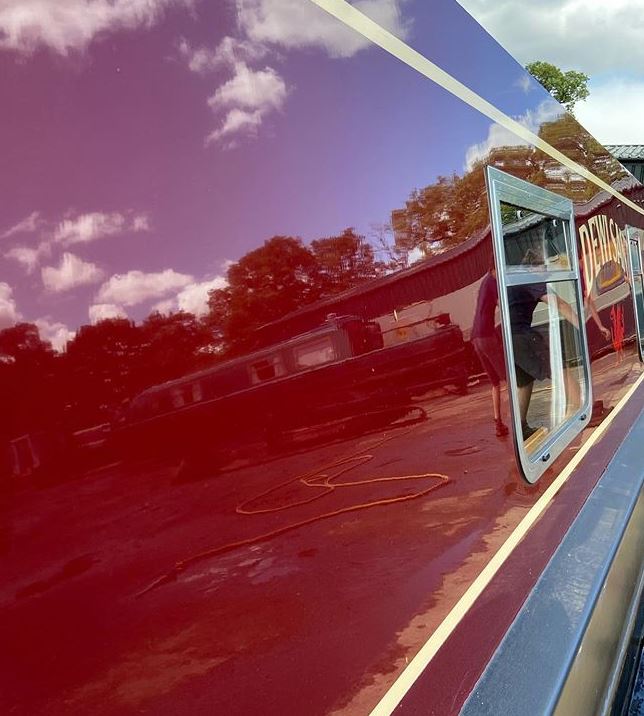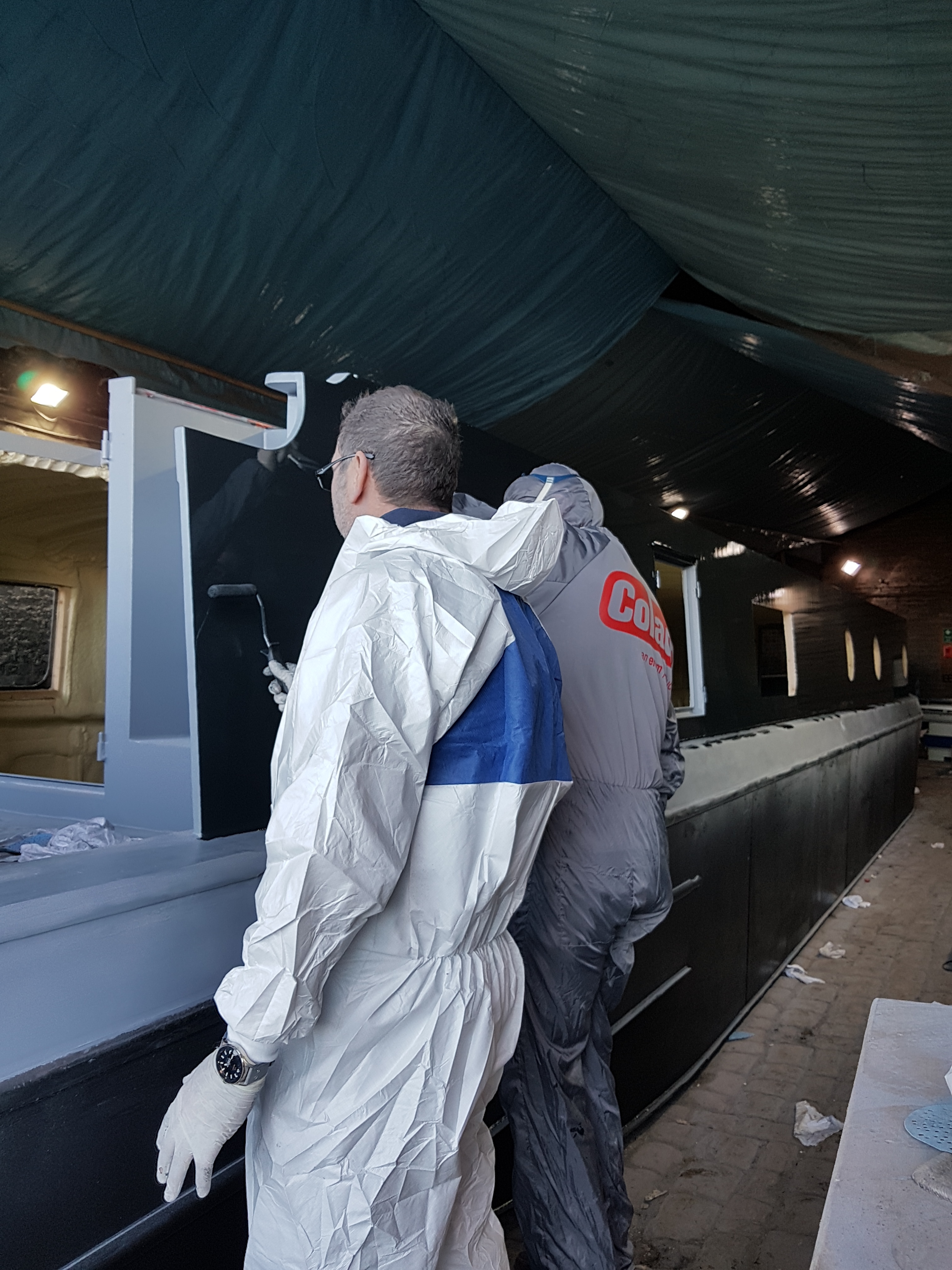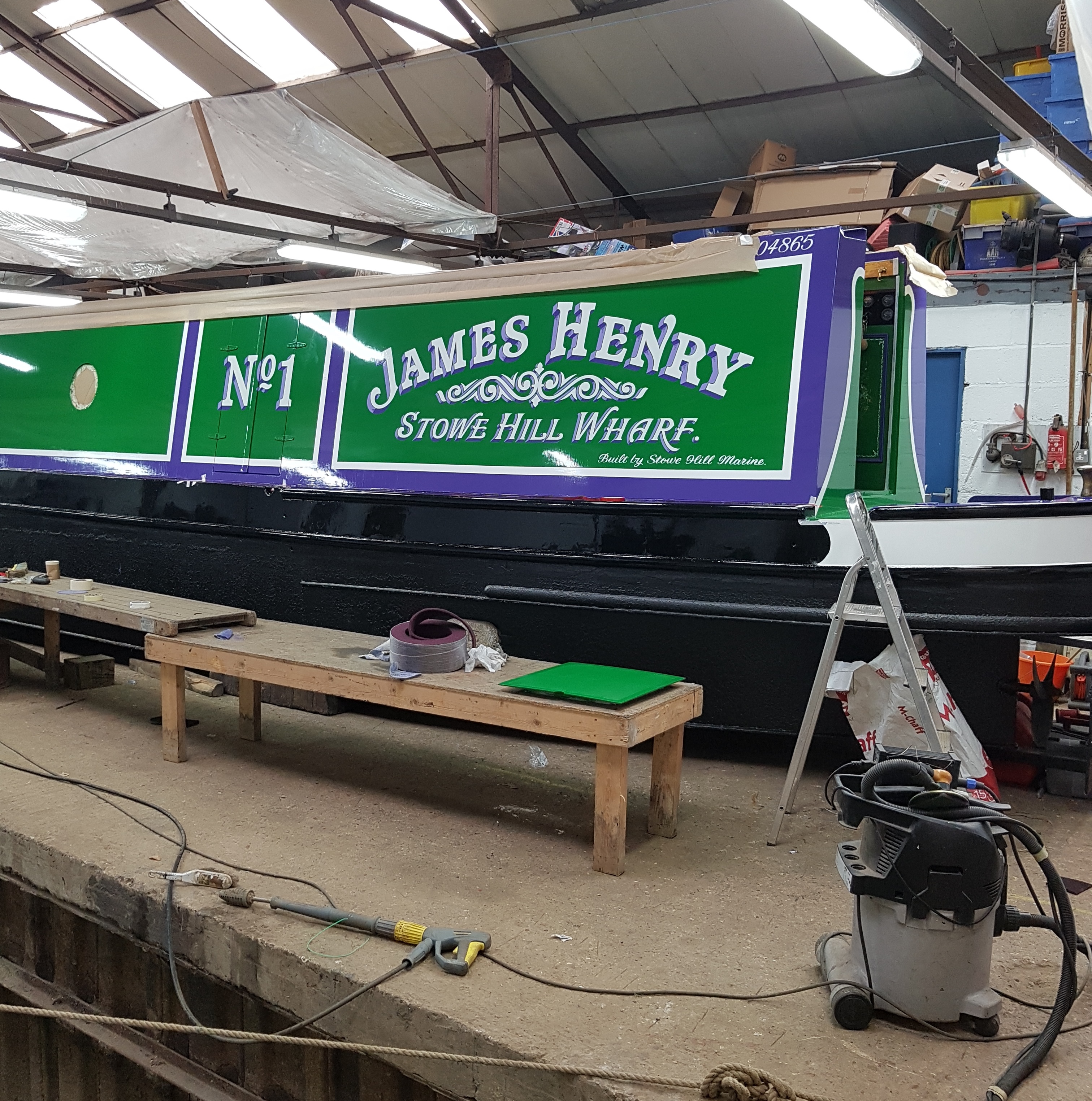How do you paint a narrowboat step by step
Painting a narrowboat or widebeam is not difficult. It only takes a lot of time. Therefore, it is important to follow the right steps. In this blog you will read all tips & tricks on how to paint a steel narrowboat with Epifanes. This paint is specially developed for steel surfaces and is therefore extremely well suited for the Narrowboat- and widebeam market.

Step 1: Schedule and goals of the paint job.
Determine what you want to achieve. Painting a boat from scratch after sandblasting takes more time than applying maintenance coats only. Also, you should consider what kind of finish you want to achieve. It will be more difficult to get the perfect finish during the winter months or when working outside compared to working in a warm conditioned environment.
Plan your paint job well in advance and try to work step-by-step. This will provide you with a clear view and will avoid undesired surprises. The schedule will therefore depend on your own goals.
Step 2: How do you determine the condition of a paint system?
A well applied Epifanes paint system can last for years or even more than a decade, but it is important that the system is applied correctly. In general there are 3 conditions a boat is in when you want to start painting.
The worst state is where there is a lot of rust and/or old paint is flaking off. In this situation the whole paint system should be removed and replaced by a new system of primer- and topcoats.
The best-case scenario is when only decolouration and/or loss of gloss is noticed. In this situation you only have to apply maintenance coats.
However, most boats are in the situation where the paint system is still fine, but with locally some small places with rust. In this last situation it is important to remove all rust and start applying the primer on those places first. After local spot repair with the primer, you can paint the whole boat with a topcoat.
Step 3: How do you choose between a one- or a two-part paint system?
A one-part paint dries through air drying additives. This paint is easy to apply by almost everybody. A two-part paint is a chemically drying paint. This paint is tougher and stronger than a single pack paint, but the application is more difficult and require more specific conditions.
Application of a two-component paint system outdoors at temperatures below 12°C and a relative air humidity above 70% is not recommended. Under these conditions the application of a one-component system will be the better option.
In general a single part paint can be applied over a two-part paint. However, a two-part paint cannot be applied on top of a one-part paint. It is easy to test whether you are dealing with a one- or a two-part paint by using some acetone. Take a piece of lint free cloth and saturate it with acetone. Place it on the painted surface for around 15 minutes. If the paint starts to wrinkle, you are facing a one-component paint which can only be topcoated with a single pack paint.

Step 4: Materials needed
Determine the colour and calculate the required amount of paint. Ensure to have enough paint and the correct Epifanes thinners at the ready. Do not forget necessary tools for the job, i.e. brushes, rollers, masking tape, abrasive paper, etc. and mind your personal safety (protective gloves and clothes, mouth cap, safety goggles). Saving money on brushes, thinners and sand paper will reflect to the final quality of your work and it will increase the chance of a posible disappointment.
Step 5: Surface preparation
A thorough surface preparation is time consuming but very important. In case of bare steel, degrease with Epifanes Cleaning Solvent or a good Acetone. Change (paper) towels regularly and allow the thinner to evaporate.
Continue by sanding the steel surface with a 60 grit. After sanding, degrease once more with Epifanes Cleaning Solvent or Acetone.
Old paint layers can be degreased with Epifanes Spraythinner for P&V. This is the spraythinner for single pack paints. Do not use aggressive two-component thinners or acetone for cleaning old layers. Again, change (paper) towels regularly. Sand the old coats thoroughly with P220-240.
Step 6: Application of the primer (Go to step 7 if you don’t need to apply a primer)
Epifanes has multiple primers available. The most common one-component primer is Epifanes Multi Marine Primer. You can use this universal, fast-drying primer on all surfaces (steel, wood and GRP) inside and outside above the waterline. This primer contains the best rust protecion ingredients of the whole industry.
Epifanes Multicover and Epifanes Epoxy Primer are two component epoxy based primers. These primers are very tough and give the best long-term protection. By its mechanical bonding you can overcoat these primers with itself within a couple of hours without sanding. This highly reduces the amount of time needed for the job. Another advantage of these Epifanes primers is that they can be overcoated with single pack products. This is unique, while most other brand epoxy primers can NOT be repainted with single pack.
It is very important to thin the first coat up to 25% to allow the primer to penetrate into the steel surface. Apply at least 3 coats of primer for sufficient rust protection. After curing, it is important to sand the primer thoroughly with P180 before applying topcoats. This is important for a proper adhesion of the topcoat. A lack of sanding will create bad adhesion and might even destroy the final coats.

Step 7: Undercoat
An undercoat is not absolutely necessary in a new full paint system. Undercoats are very traditional and they are coming from a time when primers were heavier and less smooth to sand. Especially the Epifanes Multi Marine Primer gives an enormous rust protection and is still very easy to sand (P180) and to be overcoated with a top coat. In a two component system an undercoat (called Epifanes Poly-urethane Primer) is more recommended. This is while creating a smooth surface with an Epoxy Primer is always more challenging.
It is also possible to use an undercoat when you want to change colour. Use a white undercoat when applying white or cream colours. Use a grey undercoat when using all other colours including reds and yellows.
Step 8: Painting single pack paint
You can use the Epifanes Mono-urethane or Epifanes Yacht Enamel for getting the perfect gloss finish. The Epifanes Yacht Enamel is a classic enamel, where the Epifanes Mono-urethane is a harder single part urethane based finish. Both products are very easy to apply and give a long lasting gloss. Epifanes products are extremely well suited for the Narrowboat industry. Apply this paint by a good quality foam roller or long haired soft brush. Coverage is roughly 14 m2 per litre. If you’re covering much more than 14 m2/L, your film thickness will be too poor, the paint will not fully flow and the protection against UV will be limited.
You can always thin down the paint up to a maximum of 10% to create additional flow. Always use the Epifanes Brushthinner for Paint & Varnish when thinning. Between coats lightly sand with P400 or use a fine Scotch Brite sanding pad. Make sure the boat is well prepped before applying the final coat.
Step 8: Painting two pack paint
Epifanes Poly-urethane paint is a two-part product which has a pot life of 2 to 3 hours. Mixing ratio is 2 : 1 by weight. You can paint an average of 9 m2 per 750 grams of paint.
Apply PU paints using a foam roller. Make sure you have multiple rollers available. Thinning Epifanes Poly-urethane can be done with the Epifanes Poly-urethane Brush thinner or the slower evaporating PU Slow Reducer.
If a subsequent coat is applied between 24 and 48 hours you do not have to sand between coats. However, it is advised to lightly sand with P400 to get the best possible finish.
Always ensure that ambient working conditions are fit to the paint job. Think of sufficient temperature, not a too high level of relative air humidity and sufficient ventilation.
Step 9: Other products
Within the Epifanes range there are multiple different products that can be used to make your narrowboat unique. Epifanes Multiforte is perfect for roofs and walking area's. The Multifore is is a quick drying, though, flatted paint. For an additional non-skid effect you can add the Epifanes Nonskid Beads.
Step 10: After the work is done
After application, allow the paint system sufficient time to through harden. Make notes on used products, quantity and colour for future reference. Clean the top coat regularly with a soft sponge. Never use cleaners with silicones.


